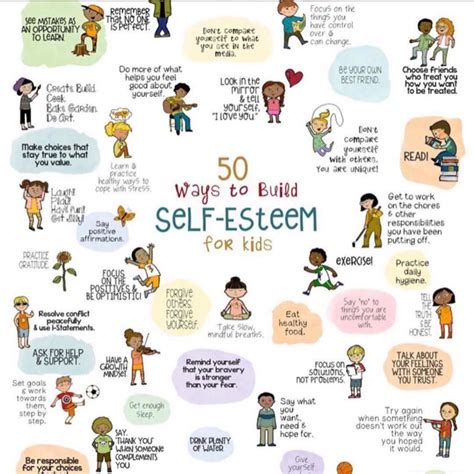Unlocking the Power of Yoga: Boosting Confidence in Children
Yoga, a practice that originated in ancient India, has found its way into various aspects of modern life, including child development. As parents and educators continue to seek ways to support children’s mental, emotional, and physical growth, yoga emerges as a powerful tool to foster self-confidence. This article explores how yoga can significantly boost confidence in children by promoting self-awareness, emotional regulation, resilience, and body positivity. We delve into key concepts, historical background, current practices, and case studies that demonstrate its impact, alongside implementation strategies and ethical considerations.
Key Concepts: Understanding Yoga’s Role in Confidence Building
Yoga is not just about physical postures; it integrates mind and body to improve mental clarity, emotional balance, and physical health. In children, these elements are crucial for developing self-confidence. Below are the key concepts linking yoga and confidence building:
- Mind-Body Awareness: By practicing yoga, children learn to connect with their bodies and emotions, enhancing their self-awareness. This awareness forms the basis of their self-confidence.
- Emotional Regulation: Yoga teaches children how to manage their emotions through breathing exercises and mindfulness. This helps them approach challenges calmly, thereby boosting confidence in stressful situations.
- Resilience: The discipline and persistence required in yoga build resilience. Children learn that mistakes are part of learning, making them more willing to try new things without fear of failure.
- Physical Strength and Flexibility: As children improve physically, they gain a sense of accomplishment. This physical progress directly correlates with higher self-esteem.
- Positive Body Image: Yoga emphasizes non-competitive physical activity, which fosters body positivity. Children focus on their abilities rather than how they look, enhancing their self-worth.
Historical Context: Yoga’s Evolution and Adoption in Child Development
While yoga has been practiced for over 5,000 years, its adoption in child development is relatively recent. Initially seen as a spiritual practice, yoga was traditionally passed down through generations in India. In the 20th century, it gained global popularity as its physical and mental health benefits became more widely recognized.
In the 1970s, yoga began to appear in schools as part of wellness programs. Today, it is integrated into educational and therapeutic settings aimed at improving children’s holistic well-being. This shift marks an important evolution in how yoga is perceived, not just as a physical practice but as a tool for emotional and psychological development.
Current State Analysis: The Role of Yoga in Modern Child Education
Today, yoga is increasingly being incorporated into school curricula, after-school programs, and therapy sessions. As educators and mental health professionals witness its positive effects, yoga’s role in boosting children’s confidence is becoming more apparent. Programs designed for children often combine playful, engaging yoga poses with mindfulness techniques, making it suitable for young participants.
Studies show that regular yoga practice can reduce anxiety and improve self-esteem in children. Schools with yoga programs report that students show better focus, enhanced emotional regulation, and greater participation in class. These results suggest that yoga can have a profound impact on a child’s ability to handle social and academic pressures, fostering greater self-confidence.
Practical Applications: Implementing Yoga to Build Confidence
Introducing yoga to children can be done in various settings, from schools to home environments. Below are practical steps for integrating yoga into a child’s daily routine to enhance confidence:
- Create a Safe Space: A non-judgmental and supportive environment is essential for children to explore yoga. This helps them feel safe to express themselves without fear of failure.
- Start with Simple Poses: Introducing simple, easy-to-master poses like the tree pose, child’s pose, and downward-facing dog allows children to experience early success, which is crucial for building confidence.
- Incorporate Breathing Exercises: Simple breathing techniques such as belly breathing or “lion’s breath” can help children manage emotions and feel more in control, which directly boosts self-confidence.
- Encourage Mindfulness: Incorporating short mindfulness exercises into yoga practice encourages self-reflection, helping children develop a deeper sense of self-awareness.
- Provide Positive Reinforcement: Acknowledging children’s efforts and progress, no matter how small, reinforces their self-esteem and willingness to try new poses or challenges.
Case Studies: Real-World Examples of Yoga Boosting Child Confidence
Numerous case studies highlight how yoga has positively impacted children’s confidence levels. Below are two examples:
| Case Study | Details | Outcome |
|---|---|---|
| School Integration Program | In a public school in California, yoga was introduced as part of the physical education curriculum for elementary students. Classes were held twice a week, focusing on simple poses, breathing techniques, and mindfulness exercises. | Within a semester, teachers reported a noticeable improvement in students’ behavior, focus, and self-esteem. Students expressed greater confidence in their physical abilities and emotional control. |
| Therapeutic Intervention | A children’s hospital in New York incorporated yoga into its therapeutic sessions for children with anxiety disorders. Weekly sessions combined gentle yoga with guided meditation and deep breathing exercises. | Children showed reduced anxiety levels and increased confidence in social settings. Many participants expressed greater self-confidence in managing their emotions and dealing with stressors. |
Stakeholder Analysis: Who Benefits from Children’s Yoga?
The practice of yoga for children benefits various stakeholders:
- Children: They experience enhanced self-awareness, better emotional regulation, and greater physical and mental confidence.
- Parents: Parents see their children becoming more self-assured, calm, and resilient, which reduces stress within the household.
- Schools: Schools implementing yoga programs often report improvements in student focus, classroom behavior, and overall mental health.
- Healthcare Providers: Pediatricians and therapists incorporate yoga as part of treatment plans for anxiety, ADHD, and other mental health challenges.
Implementation Guidelines: Introducing Yoga for Confidence Building
To successfully implement yoga programs for children, consider the following guidelines:
- Age Appropriateness: Tailor yoga practices to fit the child’s developmental stage. Younger children may benefit from more playful poses, while older children can handle more structured routines.
- Consistency: Regular practice is essential for seeing benefits. Aim for at least two sessions a week, either at school or home.
- Engagement: Keep yoga fun and interactive to sustain children’s interest. Incorporate stories, games, or challenges to make sessions engaging.
- Teacher Training: Educators or caregivers who lead sessions should receive appropriate training to ensure they understand how to guide children through poses safely and effectively.
Ethical Considerations: Ensuring Inclusivity and Respect in Yoga Programs
When introducing yoga to children, ethical considerations must be prioritized. These include:
- Cultural Sensitivity: Yoga has deep cultural and spiritual roots. Care must be taken to teach it in a way that respects its origins while being inclusive to children from diverse backgrounds.
- Consent and Comfort: No child should be forced to participate in yoga. Always ensure that children are comfortable with the activities and provide alternative options if needed.
- Non-Competitive Environment: Yoga for children should be taught in a way that avoids competition or comparison, focusing instead on individual growth and self-improvement.
Limitations and Future Research: Areas for Further Exploration
While yoga has been shown to improve confidence in children, several limitations exist in the current research:
- Sample Size: Many studies on yoga and confidence in children have small sample sizes, limiting the generalizability of the results.
- Long-Term Effects: More research is needed to understand the long-term effects of yoga on children’s self-confidence and whether these benefits extend into adolescence and adulthood.
- Control Groups: Some studies lack proper control groups, making it difficult to isolate the effects of yoga from other interventions.
Future research could explore the impact of yoga on different age groups, the long-term sustainability of its benefits, and its effects on children with specific emotional or physical challenges.
Expert Commentary
Experts in child psychology, education, and physical therapy widely agree that yoga holds great potential in








